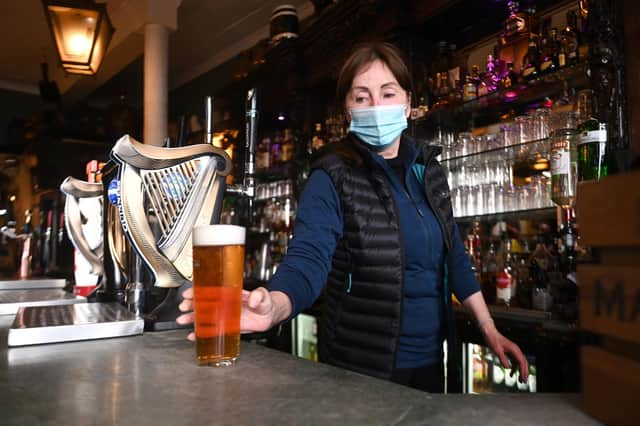Covid restriction changes in Scotland: What has changed? Which areas are affected? What areas remain the same? What are level two restrictions?


Many people across Glasgow, the Scottish islands and other areas breathe a sigh of relief as restrictions ease, however, many parts in Scotland will remain in the same restriction level.
What has changed?
Glasgow has finally dropped to Level 2 of Scotland's coronavirus measures as restrictions have been eased across the country.
Advertisement
Hide AdAdvertisement
Hide AdGlaswegians will be able to drink alcohol indoors, meet in private residences, and hug loved ones from the weekend for the first time in months.
15 council areas across Scotland have also moved to Level 1 restrictions.
These areas are Highland, Argyll and Bute, Aberdeen City and Aberdeenshire, Moray, Angus, Perth and Kinross, Falkirk, Fife, Inverclyde, East and West Lothian, West Dunbartonshire, Dumfries and Galloway and the Borders.
Under these restrictions, eight people from three households can meet inside public spaces while, outdoors, the limit has increased to 12 people from 12 households.
It also means 100 people - rather than 50 - can attend weddings and funerals.
Soft play centres and funfairs can also reopen while pubs can open slightly later indoors.
Another change is that Shetland, Orkney and the Western Isles council areas have moved to Level 0, allowing larger groups to meet in a private residence and adult contact sport to return.
Pubs and other hospitality venues can shut under their local licensing laws, rather than abiding to a national curfew.
Advertisement
Hide AdAdvertisement
Hide AdThe maximum attendance at weddings and funerals will be 200 - rather than 100 at Level 1 and 50 at Level 2.
People can meet indoors in groups of up to four households.
What areas remain the same?
While the whole of mainland Scotland was supposed to move to Level 1 on Monday, 13 council areas as well as Glasgow are in Level 2 for another few weeks.
These are Edinburgh, Midlothian, Dundee, East Dunbartonshire, Renfrewshire, East Renfrewshire, East Ayrshire, North Ayrshire, South Ayrshire, North and South Lanarkshire, Clackmannanshire and Stirling.
What can people do in level two?
People can meet in homes in groups of no more than six, from a maximum of three households.
You do not need to physically distance from family and friends in a private home.
Travel from outside a person’s local authority area to other parts of the country is also permitted.
Pubs, restaurants and other hospitality venues can reopen for drinking indoors with six people from three households.
A number of venues – including the cinema, concert halls, amusement arcades, casinos, bingo halls, bowling alleys – will be allowed to reopen and outdoor adult contact sports can start again.
Eight people from eight households can meet outdoors.
Advertisement
Hide AdAdvertisement
Hide AdUnder-12s do not count towards the total number of people or households meeting outside but do count towards household numbers indoors.
People can also provide informal childcare, for example to look after a grandchild
Up to 50 people can attend weddings and funerals and tradespeople can carry out any work in your home such as painting, decorating or repairing.
Places and business that must close at Level 2 include soft play, nightclubs and adult entertainment.
The Scottish Government is still urging people to work from home where possible in level two.
A message from the Editor:Thank you for reading this article. We're more reliant on your support than ever as the shift in consumer habits brought about by Coronavirus impacts our advertisers.
If you haven't already, please consider supporting our trusted, fact-checked journalism by taking out a digital subscription.
Comments
Want to join the conversation? Please or to comment on this article.